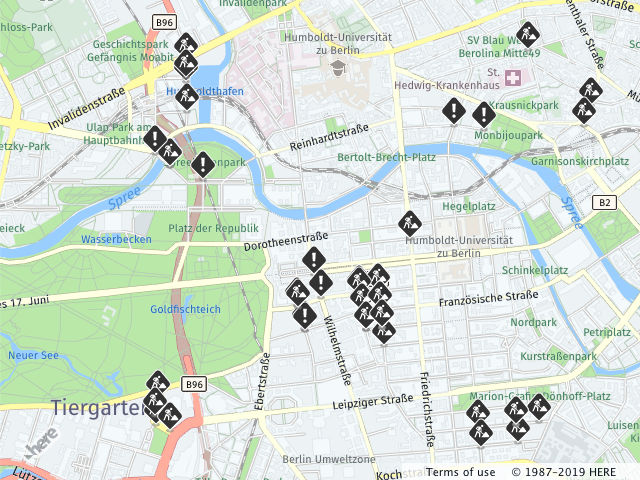- Products ProductsLocation Services
Solve complex location problems from geofencing to custom routing
PlatformCloud environments for location-centric solution development, data exchange and visualization
Tracking & PositioningFast and accurate tracking and positioning of people and devices, indoors or outdoors
APIs & SDKsEasy to use, scaleable and flexible tools to get going quickly
Developer EcosystemsAccess Location Services on your favorite developer platform ecosystem
- Documentation DocumentationOverview OverviewServices ServicesApplications ApplicationsDevelopment Enablers Development EnablersContent ContentHERE Studio HERE StudioHERE Workspace HERE WorkspaceHERE Marketplace HERE MarketplacePlatform Foundation and Policy Documents Platform Foundation and Policy Documents
- Pricing
- Resources ResourcesTutorials TutorialsExamples ExamplesBlog & Release Announcements Blog & Release AnnouncementsChangelog ChangelogDeveloper Newsletter Developer NewsletterKnowledge Base Knowledge BaseFeature List Feature ListSupport Plans Support PlansSystem Status System StatusLocation Services Coverage Information Location Services Coverage InformationSample Map Data for Students Sample Map Data for Students
- Help
Traffic
The Maps API provides a means of retrieving and displaying traffic data on the map for major urban areas around the globe.
Showing Traffic Flow on the Map
The example below uses the traffic component in the Maps API to show a map of a part of Berlin indicating the traffic conditions. Roads where traffic flows freely are marked in green, roads where congestion is moderate are in orange, while those that are congested are shown in red.
The API provides access to map tiles with traffic information through the HERE Traffic API. It automatically adds the flow layer to the default layer collection (accessed through the method createDefaultLayers() on the H.service.Platform instance). The application user can switch the traffic flow information display on and off for the available map types via the MapSettingsControl.
The code below adds the flow layer available in the default layer collection to the map.
map.addLayer(defaultLayers.vector.normal.traffic);

Note
By default, the traffic layer is updated every three minutes. You can change this interval by instantiating your own traffic layer and providing the desired value to the constructor.
Showing Traffic Incidents on the Map
In addition to traffic flow, the API integrates traffic incident data by providing a marker overlay that can be added to the map.
The code below adds the pre-configured traffic incidents marker layer available in the default layer collection to the map to show traffic incidents.
map.addLayer(defaultLayers.vector.normal.trafficincidents);
This code assumes that map is a previously instantiated and initialized instance of H.Map.
The MapSettingsControl includes an entry for switching traffic incidents display on and off if the traffic incident layer is detected in the collection of layers passed to the UI.

Note
By default, the traffic layer is updated every three minutes. You can change this interval by instantiating your own traffic layer and providing the desired value to the constructor.